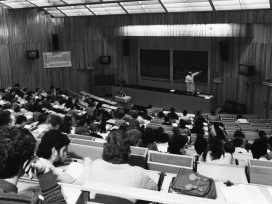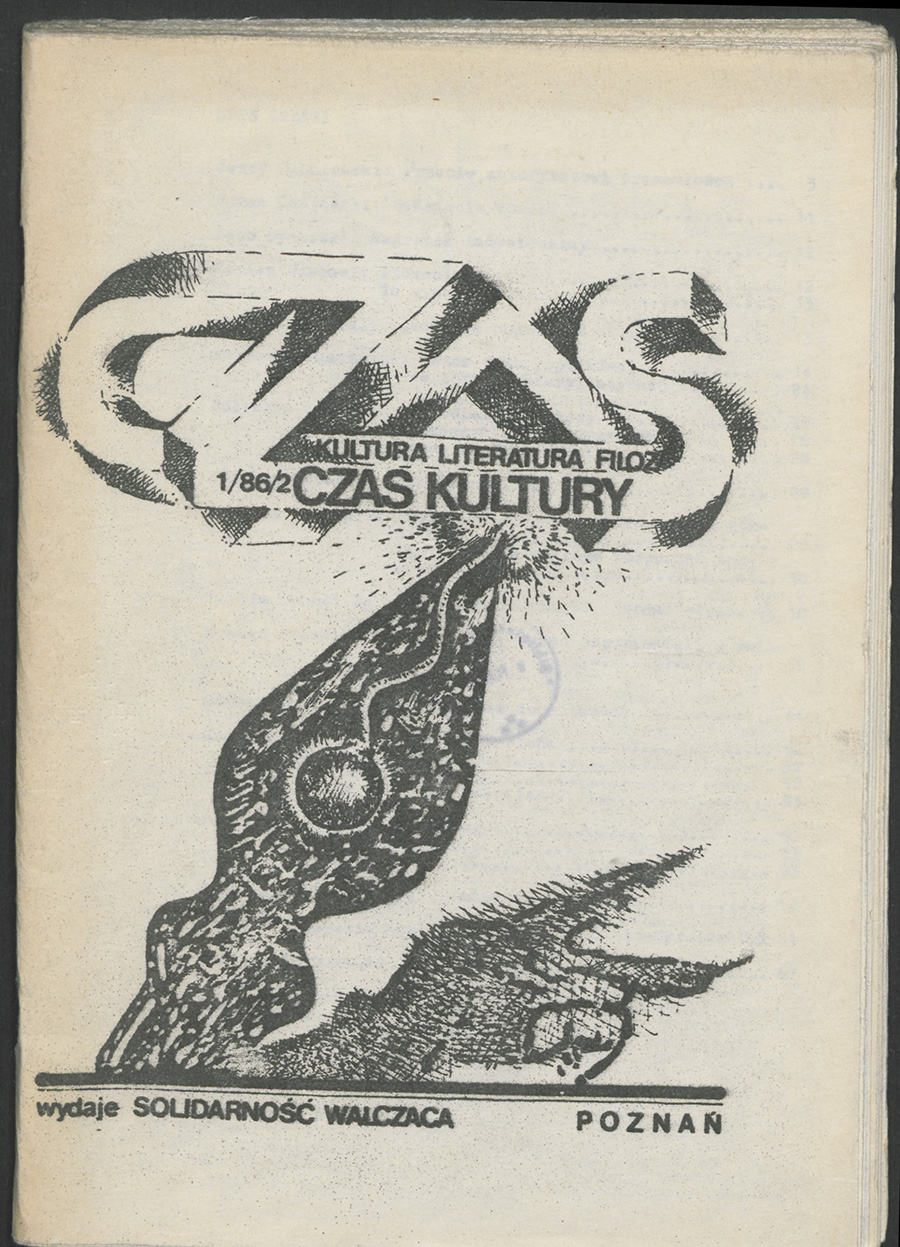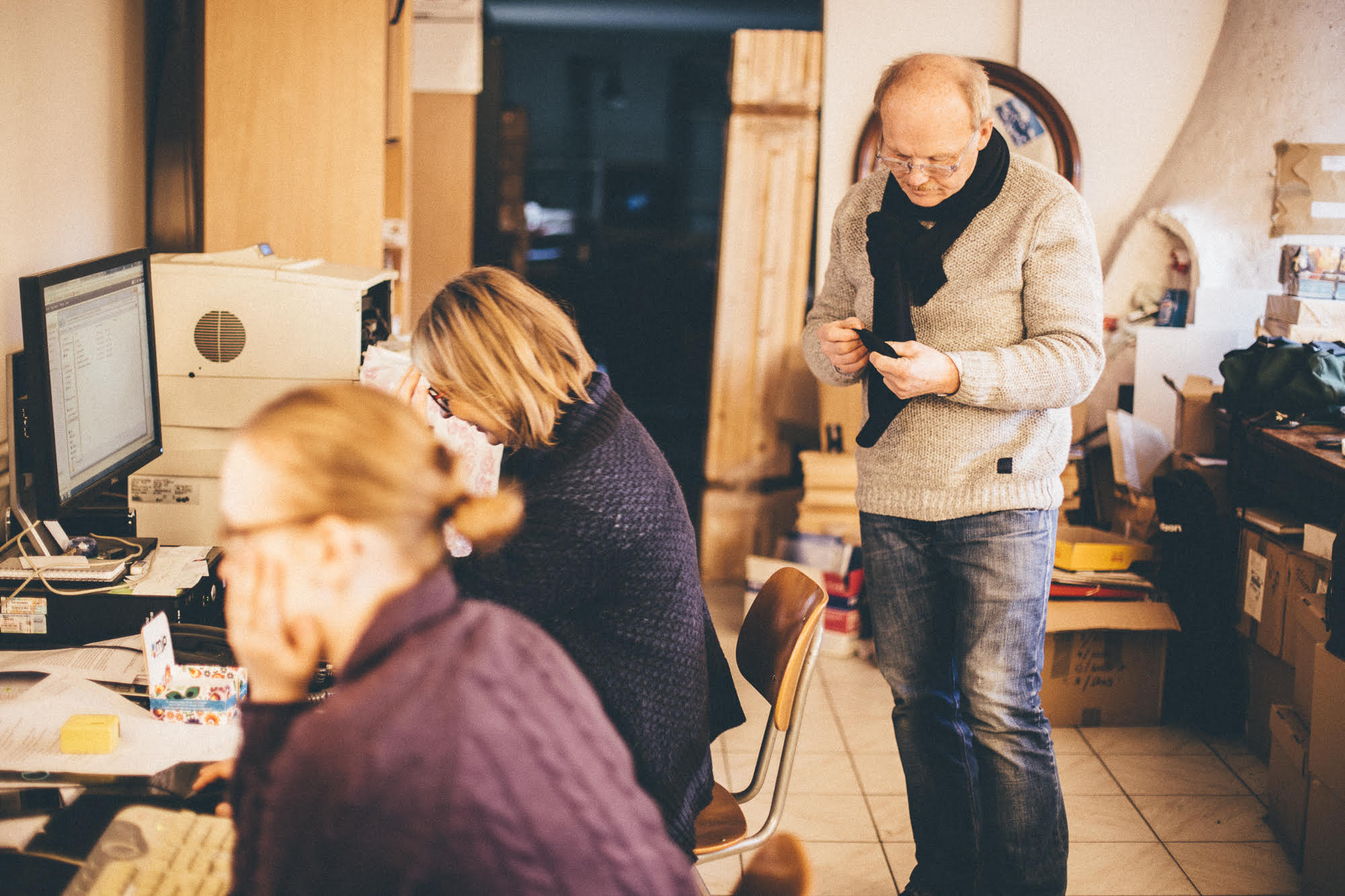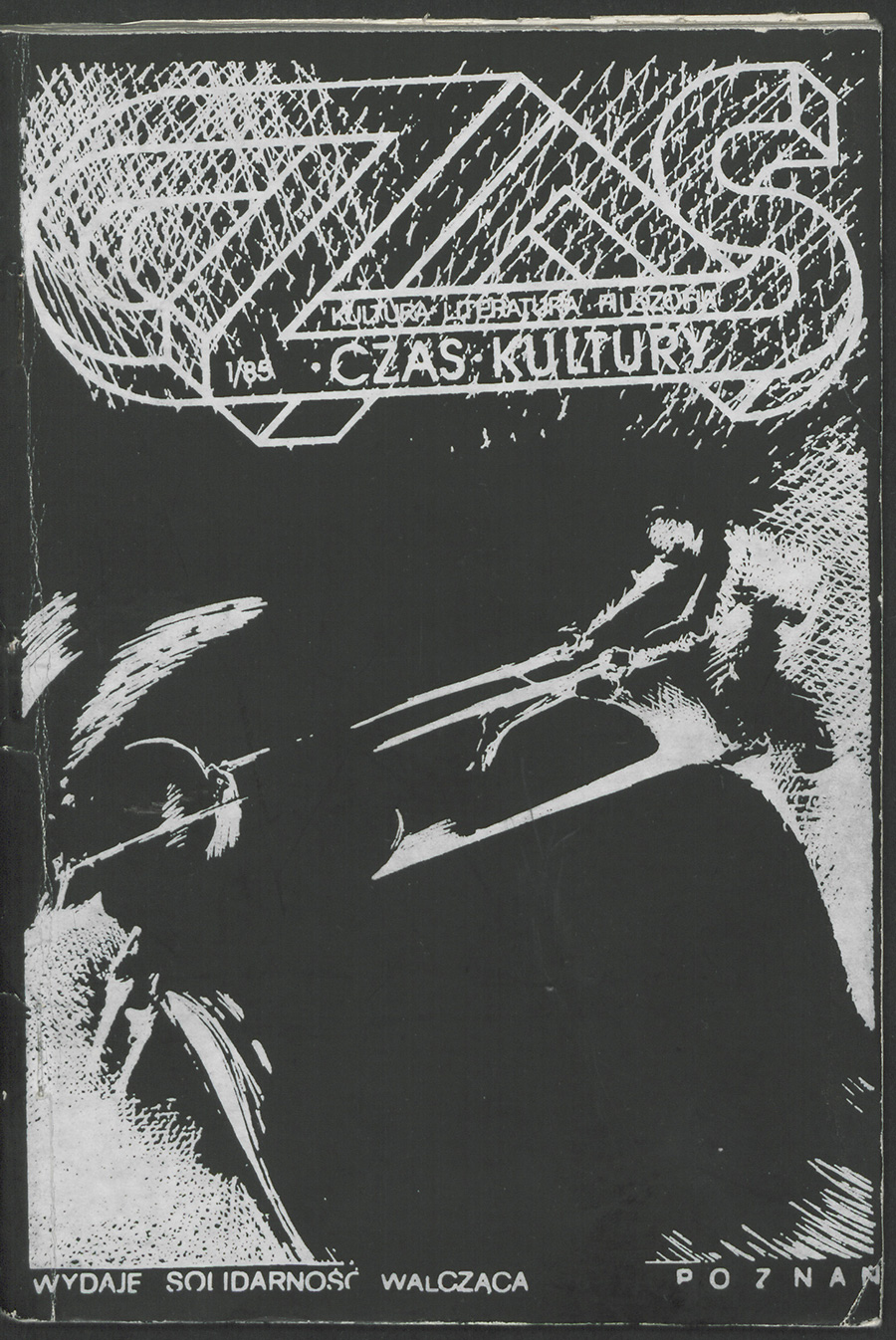
Expectations, standards, and requirements in higher education vary from country to country. In the third episode of the Knowledgeable Youth podcast Ukrainian students embark on the complex subject of tertiary education.
After 1989, cultural journals were central to the flourishing of intellectual life in Poland, enjoying circulations never reached before or since. However, neoliberalism has undermined journals’ popularity and financial viability. Dependency on public subsidies makes them increasingly vulnerable, writes the editor of ‘Czas Kultury’.
March 2018 saw the publication of the first Polish issue of the monthly magazine Vogue. There would have been nothing remarkable about this, except for the fact that it coincided with the appearance of the sixtieth – and final – issue of Borussia. Published by the ‘Borussia’ Cultural Community Association in the Masuria region since 1991, Borussia (the Latin name for Prussia) was seen as important for the community it served. In a parting statement, the editors wrote: ‘We have failed to establish a formal editorial office. We were unable to convince the authorities (regional or national) of the need for a regular regional periodical that would also have broader, more universal appeal and serve as a workshop for new, progressive thinking … in a democratic Poland as well as in a peaceful and unified Europe.’
Can these simultaneous events be seen as evidence of the same process – a race to catch up with the West, underway since 1989? Has Poland’s post-socialist, parochial complex led to the marginalisation of all standards that raise and refine those of the market, capital and the entertainment industry? And has this happened at the expense of high culture, political and social engagement and critical reflection?
If so, it would mean that Vogue displaced Borussia because Vogue is the agent of the global market, while Borussia expressed no more than local, grassroots aspirations. More broadly, it would mean that the ‘dependence doxa’,1 the term which refers to the naturalization and resultant relative invisibility of the dependence of Central Europe from the western core, must be widened to take account of geopolitical narratives, neo-imperialism and the distribution of capital.2 And it would mean that the history of Polish cultural journals appearing since 1989 can also be seen as a political and social history of contemporary Poland.
After 1989, following the first semi-free parliamentary elections and the formation of the first non-communist government in the so-called Eastern Bloc, Poland became a huge social, political and economic laboratory. The regime change, then seen as a move from state socialism to liberalism and the free market, overturned the functioning of state and society at all levels. The position of cultural journals – and print media generally – changed radically.

Czas Kultury 2/1986. Source: czaskultury.pl
The basis of the old, centralized order ceased to exist. The state monopoly on the press was dismantled, the system of state licenses replaced by a system of registration, and the law on the control of publications repealed. The real breakthrough came with the closure of the Main Office for the Control of the Press Publications and Performances, which had been responsible for approving every new title and was notorious for refusing permission to publish on the absurd grounds of ‘paper shortages’. Previously illegal magazines such as Czas Kultury (Time of Culture, est. 1985), brulion (rough sketchbook, est. 1987) and Fa-art (est. 1988) could now be sold on the market. Other publications, often known as ‘the journals shaped by ’89’, soon joined them. They included Kresy (Eastern Borderlands, est. 1989), Borussia (est. 1991), Krasnogruda (est. 1993) and Pogranicza (Borderland, est. 1994). Freedom, it seemed, had triumphed.
Before discussing whether this victory was real, a brief retrospective glance is needed. In 1981, Wojciech Jaruzelski’s imposition of martial law destroyed any existing faith in the possibility of reforming the system. This had numerous consequences that also affected cultural journals. In 1986, Poland had just eighteen officially published socio-cultural journals, with a total circulation of less than 500,000 (in a country with a population of 37.5 million). These low figures were linked to dwindling trust in official media and a distaste for propaganda, be it more or less intrusive. In their hunt for readers, state journals curried favour with the market by promoting scandalous literature, including excerpts from D. H. Lawrence’s Lady Chatterley’s Lover, writings of the Dutch sexologist Theodoor Hendrik Van de Velde, and the memoirs of the Polish polygamist Jerzy Kalibabka.3 This destroyed any credibility they may have had. The increased popularity of Catholic journals, perceived as anti-socialist and freedom friendly, is less surprising in this context. The most popular of thesm, Tygodnik Powszechny (The universal weekly), was published with a print-run of 80,000 copies, and also sold. But there was also a thirst for cultural journals in general. The problem lay in their scarcity.
The Krakow quarterly NaGlos (OutLoud) was an excellent example of how a journal could deal innovatively with censorship. Between 1983 and 1989, Naglos was a spoken-word journal, ‘published’ at meetings. ‘Readers’ would gather to be shown a magazine cover and a contents list, and then listen as authors read their articles, poems, stories, reviews or pamphlets. If the author had emigrated, the text would be read out by someone else. Audiences numbered up to one thousand. Naglos organised twenty-five evening performances of this kind. It was not just a cultural phenomenon, but a case of what James S. Scott has called ‘infrapolitics’: a discrete, non-confrontational, highly innovative ‘weapon of the weak’.4

Editorial space of ‘Czas Kultury’ (2015). Photo by: Irek Popek
While the end of censorship, the opening up of distribution channels, and access to public funding proved an opportunity for previously ‘underground’ publications, it was also a shock. Two important journals – Czas Kultury and brulion – experienced this kind of ambiguity, and their stories illustrate it well.
Before 1989, both had belonged to so-called ‘third circulation’ (trzeci obieg) publications.5 The ‘first circulation’ referred to official publications that supported the political status quo (or else didn’t support it and were punished by the censor). The ‘second circulation’ was the unofficial publishing network, a bastion of political opposition that had grown out of the spirit of Solidarity. The ‘third circulation’ took a poor view both of the authorities and the ‘professional’ opposition, viewing them as elements of the system. Instead, the ‘third circulation’ chose to walk away from the battlefield and found an alternative. It connected counterculture with subculture, linking the traditions of western art magazines with eastern European unofficial publications, or samizdat.
The first issue of Czas Kultury was published in 1985. It appeared with the subheading ‘Culture–Literature–Philosophy’, areas previously constrained by censorship and hence associated with the freedoms everyone longed for. The journal appeared alongside an existing magazine, Czas (Time), which focused on politics. As the anonymous introduction to the first issue put it, it was the expression of ‘a new form of participation in modernity’. The intention was to create a politically independent that which would not be split into anti-government and pro-government, and which would not discriminate on the basis of political position. The first issue contained writings by Martin Buber, Slawomir Mrozek and Lev Shestov, alongside articles on Hasidic Judaism and concepts of freedom in Ancient Greece. ‘The time is ripe to set up a new cultural centre that is fully independent and formed as a single unit,’ the editorial stated. The moment had arrived for action without detrimental focus on individual interests. Young creative people, without whom independent culture would be doomed to recycle old material, were also to be offered a space.
A similar call for young contributors appeared in brulion, which was first published in Spring 1987. ‘We would like to invite all writers working in the Polish language to cooperate with us, especially the youngest,’ the editors wrote. Like Czas Kultury, brulion published previously forbidden writers such as Nabokov, Solzhenitsyn or Ionesco, alongside photographs of graffiti, cabaret texts and a song entitled ‘Our Tradition’ by the rock group T. Love Alternative. Cultural canons were subverted as a matter of course, in line with a view expressed by Robert Tekieli, brulion’s editor-in chief, who in an interview in 1991 said that ‘Giotto and the Dead Kennedys aren’t too bad really’.6
After 1989, brulion’s editors were keen to secure controversial material such as Georges Bataille’s Story of the Eye, prose by the Marquis de Sade and Jean Genet, or interviews with porn stars. This time around, the publication of sexually explicit material seemed like a justified response to the arrival of cultural and economic freedoms and the liberation of the market. The medium became the message and the popular culture promoted by ‘underground’ journals became ‘high culture’. In the first years of the ‘free market,’ young poets promoted by brulion were even published in series financed by the Ministry of Culture and the Arts. The magazine also promoted itself in weekly broadcasts on Radio Kolor and on repeated programmes shown on state television. At the time, there was no other cultural journal in Poland with comparable outreach.
These two titles are no more than a tiny sample of the whole. New opportunities connected to ownership, law, finance, organization and technology (with quick, cheap and easy printing) all helped. By the end of the 1990s, over six hundred cultural-socio-political journals were being published in Poland.7 It would be no exaggeration to say that, in these new conditions, the – often tiny – groups of people gathered around editorial offices galvanised cultural life. The new journals proved formative to most of the important figures in new Polish literature, including Olga Tokarczuk, Andrzej Stasiuk and Marcin Swietlicki. In a situation where literature had been transformed into a commodity, cultural journals continued to show respect for literature’s autonomy. As the poet Julia Hartwig wrote: ‘In Poland, journals act as literature’s pacemaker.’8
Immediately after the transition, the view prevailed that ‘the best cultural policy is no policy at all’.9 Socio-political thinking was dominated by faith in the power and benevolence of the market. As the role of the state in supporting and financing cultural initiatives shrank, very little private sponsorship emerged in its place.
The effect of the arrival of the free market on magazines and journals was ambiguous. On the one hand, regional journals and special interest magazines flourished in areas such as Warmia, Masuria, Pomerania and Silesia. An ‘escape from the centre’ became a real option. In geographical and cultural terms, this meant breaking free of Warsaw. Politically, it implied a move away from socialist centralisation. Many new ventures were inspired and fuelled by ideas about so-called ‘small fatherlands’, which could be re-discovered or invented amidst the rubble of socialist notions of national unity. On the other hand, the quality of published journals varied and their outreach was often limited. Territorial decentralization also brought a decentralization of values and expectations. As the distinguished Polish literary critic, Maria Janion, wrote: ‘it is here, in those “small fatherlands” that I once loved so much, that so much confused and rambling writing is produced.’10
But literary merit was not all that was at stake. Cultural journals opened up new areas for discussion and introduced topics previously excluded from official public debate. Contemporary history, particularly the topics of Poland and Europe, totalitarianism and central European regions, was addressed with enthusiasm. Questions were also asked about the meaning and direction of current social, political and economic changes. Attempts to understand the new conditions and the ‘crises’ associated with them were generally set against a European or global backdrop. There was particular respect for new material released by Polish émigré communities abroad – such as the art and literature journal Bundesstrasse 1, published in Germany, or other magazines appearing in France or Israel. Other publications promoted the writing and culture of minority groups in Poland such as Lemkos, Belarusians or Jews.
Cultural journals also played an important educational role, offering material about new thinking in philosophy or the arts. In the mid-1990s, journals published translations of writing by Derrida, Lyotard, Deleuze and others, as well as commentaries. Post-modernism developed a special status as the guarantee of a new, liberal contribution to culture. Derrida became more than a symbol of innovative thinking: he was an agent of liberation. In general, previously unpublished work was enthusiastically and widely promoted. The names now included Joseph Brodsky, John Cage, Georges Perec and Emil Cioran, as well as other writers from neighbouring countries and the Balkans.
Cultural journals helped fill out the blanks in Polish history and culture and established new social networks. Many published news about material that had appeared in other magazines, and there was regular discussion and debate between the editors of different publications. Journals also contributed to the process of ‘catching up with Europe’. Editors became recognized participants of the process of cultural modernization that would free Poland from Soviet influence for good and transform the homo sovieticus (Soviet Man) into a global citizen, bringing the provincial world he inhabited closer to the centre of things. However, this mission proved successful only in the short term. A few years on, the new press market was to have very different priorities.
The law of supply and demand created a paradoxical situation where the rising number of titles appearing on the mainstream media market was accompanied by a fall in readers and the size of print runs. In 1996, the daily press appeared in print runs almost half the size of those seen in the last days of the Polish People’s Republic.11 Readers preferred cultural weeklies and monthlies. In that same year, the total print-run of journals of all genres reached 80 million.12 Special interest publications became increasingly popular. Film enthusiasts and heavy metal fans had their own magazines, as did readers with a particular interest in automobiles, erotica or esotericism.
In 1990, 51 new titles were launched; in 1991 the figure grew to 61 and in 1992 to 68. By the end of 2000, almost 600 socio-cultural magazines and journals were being published regularly in Poland. This amounted to a fifth of all newspapers and magazine titles. But in the first decade of the transition, over 100 cultural journals also collapsed. These were mostly weeklies and magazines with limited or local outreach. Many of them appeared less frequently than they declared, until finally they became irregular publications. This was usually the prelude to their disappearance.13
Foreign capital also began to dictate its own laws, and this proved key to the transformation of the press market in Poland. The German ‘Big Four’ – Bertelsmann, Bauer, Springer and Burda – built up their positions very quickly. Other foreign companies, including JMS, Scandinavia, Egmont and Helvetica, were also very successful. A race began to introduce new magazines onto the market.14 Their format and content were very similar. The launch of magazines like Burda, Bravo, Bravo Girl, Claudia or Focus announced the ascendancy of template publishing. Their technical quality, visual appeal and low production costs (they simply copied existing material) fell in with the accepted narrative about modernization. Cultural journals, whose aim was not just to entertain, did not fit into this storyline; nor were their production costs reduced by using imported templates.
The free market, which had eased access to new technologies (computers and videos), undermined the authority of the written word. In 1997, 42 per cent of Polish society did not read books at all, while 24 per cent read only occasionally.15 As the number of books that were being read fell, their price rose. The end of the era of the book – and of journals – had come.
At the start of this century, journals were caught in a vacuum. Schools, universities and the media offered virtually no encouragement to read them. There was little kudos to be had from financing journals privately. The work of the Batory Foundation, of local administrations and cultural institutions, or of specially formed funding bodies did nothing to change the overall picture. Most titles could not survive on sales and became the beneficiaries of public subsidies. For years, the only exception was Nowa Fantastyka (New Sci-Fi) which kept itself afloat through sales and advertising.
Widespread dependence on public subsidies distributed by commissions set up within the Ministry of Culture, had – and continues to have – severe limitations. An increasingly small number of titles began to receive funding.16 This led to a situation in which only two kinds of journal were likely to survive. First, traditional, well-established titles such as Res Publica and Czas Kultury. Both had appeared before 1989 and had been read by two generations. They were hence in a better position than newer titles associated solely with a younger generation increasingly disinclined to buy magazines.17 The second group of survivors were the journals that received regular state funding, for example Odra (The Oder), Tworczosc (Creativity) and Literatura na Swiecie (Literature in the world).

Czas Kultury 1/1985. Source: czaskultury.pl
The bi-polar ‘tradition or subsidy’ scenario generated a whole range of survival strategies. In 2017, the distinguished journal Fa-art was planning to celebrate thirty years of publication. As it turned out, it failed to survive beyond its anniversary. Fa-art was no longer able afford the fee necessary to participate in funding competitions organized by the Ministry of Culture. A public appeal was launched in the hope of publishing two further issues (anthologies of poetry and prose). In the event, less than twenty per cent of the money needed was received and the journal closed down.
Another example is Obieg (Circulation). Between 1990 and 1994, it was published by the Warsaw Centre of Contemporary Art. After that, it disappeared for a full decade before being revived in 2004 as a quarterly and a website. After 2010, the print edition was dropped. These changes were by any means only negative: Obieg is now a bi-lingual internet journal which focuses on critical writing about art and culture. It also encourages authors to publish opinion pieces which have proven important enough to merit printing in paper format in 2017.
A third example is Fronda. Founded in 1994, it promotes Catholic values – especially the teachings of John Paul II – and appears with the subheading ‘A consecrated journal’. Yet Fronda’s market success is not only down to its Catholic theology and conservative values. It has proven to be open to pop-cultural aesthetics and has carried cover stories such as ‘The sex life of Catholics’, ‘Mosques and machetes’ and ‘Shitting Gender’, alongside images in styles redolent of pop-art, comics and street art. The magazine established an internet portal early on, but because authors published online were critical of the Polish National Movement (Ruch Narodowy), in 2014 the online editors decided to split. Currently, the quarterly and the internet portal function independently, occasionally indulging in bouts of verbal sniping.
The frequently heard theory about the stabilization of the press market and the situation of cultural journals in Poland since 2000 must be understood in the context of economic transition and change. When titles are collapsing, editorial offices are being closed, and people are hunting desperately for a formula that works, while having to make constant appeals for financial help, the word ‘stabilization’ takes on a different meaning.
We are apparently still dominated by the ‘dependence doxa’, which has taken over not only practices but minds. Immediately after 1989, there was a huge enthusiasm for all things new, and a blind faith in the benevolent powers of the free market. Twenty-five years on, the market appears to be preferring predetermined models and formats. This is true ideologically and in terms of media content. It is a preference rooted in the emotional structures that characterised transition. In the first issue of Polish Vogue, the editor-in-chief, Filip Nidenthal, wrote: ‘Here we are in Poland, at last. We have been waiting for this for as long as I can remember … “Vogue Polska”. Sounds good. Sounds right.’ He recalled his first encounter with the American version of the magazine in 1991, adding that he had read and re-read the contents until he ‘knew everything by heart’.
You don’t have ‘to know everything by heart’ to crave what comes from the centre of things – as the ‘dependence doxa’ dictates. The year 2000 saw the publication, in Poland, of a local version of the French monthly Le Monde Diplomatique. The appearance of this international title was swiftly followed by the closure of the bi-annual journal Lewa Noga (Left foot forward) which had appeared since 1993. Key editors from Lewa Noga had moved to join the team working on the Polish version of Le Monde Diplomatique. The way in which the press self-colonizes can also take gentler forms. When a monthly entitled Pismo: Magazyn Opinii (Journal: A magazine for opinion) started out in 2018, its editor-in-chief openly declared that it was based on The New Yorker. In this particular case, no editorial office has been taken over and no existing title closed. At least not yet.
Any assessment of the state of cultural magazines in Poland must take account of the crucial role played by the intelligentsia. Cultural journals acted as the main medium of communication for intellectuals. However, over several decades, grandiose descriptions of journals as ‘spaces for intelligent thinking’ with ‘a mission to form ideas’ have led to loss of readership, influence and financial resources. Post-socialist capitalism has not favoured cultural journals either. Yet they have remained actors in the public arena. Today, under a neo-conservative government, many of these niche magazines offer a refuge for opposition views, alternative perspectives, and for people who feel different. In 2017, a columnist at Czas Kultury chose to withdraw a feature on refugees from publication. Her main reason was concern about online hate speech, to which she had already been subjected. The fear that an article published in a cultural journal will reach an audience and generate a public response is paradoxical evidence that cultural magazines remain a significant component of Poland’s social ecumene.
Zarycki T., 2014, Ideologies of Eastness in Central and Eastern Europe, London, 32–63.
Chari S., Verdery K. 2009, ‘Thinking between the Posts: postcolonialism, postsocialism, and ethnography after the Cold War’, Comparative Studies in Society and History, no. 51, 6–34.
Mielczarek, T., 2002, ‘Czasopisma społeczno-kulturalne i społeczno-polityczne w okresie Polski Ludowej (1945-1989)’ (Socio-cultural and socio-political journals under the Polish People’s Republic [1945-1989]), Rocznik Historii Prasy Polskiej (‘A Yearbook of Polish Press History’), 5/1(9), 177.
Scott J., 1990, Domination and the Arts of Resistance: The Hidden Transcripts, Yale 1990.
Varga K., Dunin-Wąsowicz P., 1995, Parnas bis. Słownik literatury polskiej urodzonej po 1960 roku (Parnassus Bis. Polish Literature Born after 1960), Warsaw, 93.
Gondowicz J., Pawlak A., 1991, ‘Rzecznicy neogównażerii. Rozmowa z Robertem Tekieli, redaktorem pisma literackiego “brulion”’ (Spokesmen for those bullshitting kids. Interview with Robert Tekieli, editor of the literary journal ‘brulion’), Gazeta Wyborcza, 25.11.1991, no. 274, 17.
Fiut I. S., 2000, ‘Pisma społeczno-kulturalne w latach 1989-2000 (Socio-cultural journals 1989-2000],’ Zeszyty Prasoznawcze (‘Notebooks on the Press’), R. XLIII, no. 3-4, 66.
Nolbrzak R., 2012, ‘“Miejsca, w których uprawia się myślenie”. Działalność czasopism kulturalnych w Polsce po 1989 roku’ (‘Spaces for intelligent thinking’. Cultural journals in Poland after 1989), ‘Folia Litteraria Polonica’, 3(17), 32.
Krzysztofek K., 1999, ‘Ewolucja założeń i programów polityki kulturalnej w Polsce w latach dziewięćdziesiątych. Czasopisma i ich odbiorcy’ (‘The evolution of premises and programmes in Polish cultural policy in the 1990s. Journals and their readers’), in: Kultura polska w dekadzie przemian (Polish Culture in a Decade of Change), T. Kostyrko, M. Czerwiński (eds.), Warsaw: Instytut Kultury, 272.
Nolbrzak R., 2012, ‘Miejsca, w których uprawia się myślenie’ (‘Spaces for intelligent thinking’), op. cit., 33.
Filas R., 1999, ‘Czasopisma i ich odbiorcy’ (Journals and their Readers), in: Kultura polska w dekadzie przemian (Polish Culture in a Decade of Change), op. cit., 134.
Ibid.
Fiut, I. S. 2000, ‘Pisma społeczno-kulturalne w latach 1989–2000’, Zeszyty Prasoznawcze, R. XLIII, nr 3–4, 66–67.
Bajka Z. 1996, ‘Kapitał zagraniczny w polskiej prasie’ (Foreign capital in the Polish press), in: Media i dziennikarstwo w Polsce 1989–1995 (Media and Journalism in Poland 1989–1995), G. G. Kopper, I. Rutkiewicz, K. Schliep (eds.), Krakow.
Baczyński M., Cichy M., 1997, ‘Książka na wolności’ (The liberated book), Gazeta Wyborcza. Magazyn, no. 37.
Decision-makers often do not know the journals and only some of the points needed for a successful application are recognised as having any substantive value. Key points are given for the enigmatic ‘strategic value’ of the journal, which means that data can be manipulated. In 2011, after a highly controversial distribution of public funds, a meeting devoted to the ‘situation of niche magazines’ called for the depoliticization of decision-making on funding applications, for qualitative assessment, and for the names of experts employed by the Ministry of Culture to be revealed. A similar situation occurred in June 2018, when many worthy and long-standing cultural journals – including Res Publica Nova, Liberte!, Ha.art, Przegląd Polityczny and Czas Kultury – did not receive public funding. Their ‘strategic value’ was not in line with the strategy of the current government.
Czapliński P., 2007, Powrót centrali: literatura w nowej rzeczywistości (The Return of the Centre: Literature in a New Reality), Kraków 2007.
Published 5 July 2018
Original in Polish
Translated by
Irena Maryniak
First published by Eurozine (English version)
Contributed by Czas Kultury © Waldemar Kuligowski
PDF/PRINTSubscribe to know what’s worth thinking about.

Expectations, standards, and requirements in higher education vary from country to country. In the third episode of the Knowledgeable Youth podcast Ukrainian students embark on the complex subject of tertiary education.

The crux of different peoples’ history, and of humanity as a whole, is always food and hunger. In the final analysis, it’s the stomach that counts.